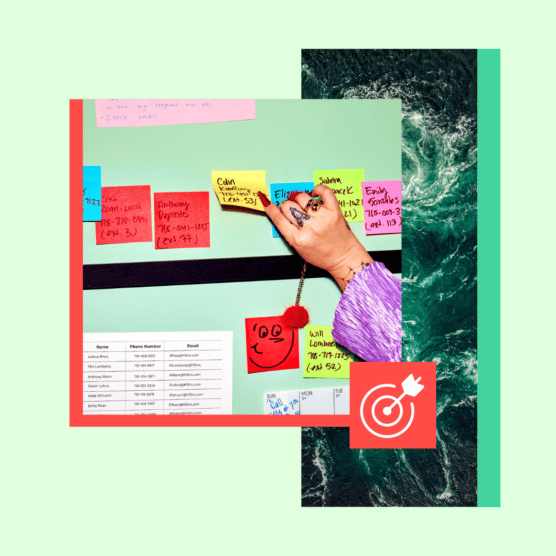Recent changes to API access on Twitter and Reddit have brought the topic of social media APIs into the news.
APIs power many of the tools and features we use every day in apps and marketing tools — but they’re essentially invisible to everyone but developers. So, what do you need to know about APIs as a social media user or professional?
In this post, we cover everything you need to know about social media APIs to understand how they affect the online tools we use every day.
API stands for application programming interface. A social media API is a piece of code that allows social media networks to integrate with third-party apps and tools — for example, social media management tools like Hootsuite.
At its heart, an API is a communications channel. Different programs use it to “talk” to each other and share data in real time. As such, social media APIs allow developers to create apps and services that extend the functionality of social media platforms.
Everyone wins. The social media platforms benefit from this additional functionality without having to build new features themselves. Developers benefit by building new for-profit apps. And users benefit by gaining access to the functions developers create using API data access.
A social media API works by connecting social media platforms with external tools and apps. It gives external developers access to certain kinds of data that social media-related tools require to work.
All popular social media networks have APIs that developers can use to create social media management tools. You can dig into details on each network’s site for developers:
How does this work in practice? Social media tools like Hootsuite have seamless integrations with all major social networks based on API access. The APIs connect Hootsuite with your social media accounts. Thanks to them, you can manage all your social accounts from one centralized dashboard rather than switching between tabs to handle profiles on different platforms separately. This includes scheduling and publishing posts, putting together analytics reports, replying to messages and comments, and so on.
Networks decide how much social media data their APIs give developers access to. That means apps and other tools that help you manage your social media accounts have to play by the rules set out by the social platforms. That’s why connecting social accounts to a third-party tool for the first time can be cumbersome — social platforms will typically ask you to confirm your consent to share data before granting initial access through their API.
The social media APIs also dictate what features third-party tools can — and can’t — provide. Does it seem like your social media management tools are making you jump through hoops to accomplish a task? It’s likely because they are working around the limitations of a social platform’s API.
For example, Instagram has two main APIs. The Instagram Basic Display API allows developers to create consumer-level apps (e.g. apps that allow users to feature their Instagram feed on their website). These only require basic access to an Instagram account.
The Instagram Graph API provides greater functionality. It’s intended for apps that allow professional Instagram accounts to manage their entire Instagram presence — like Hootsuite.
Open APIs
Source: Camwilliams96, CC BY-SA 4.0, via Wikimedia Commons
Open APIs are publicly available interfaces. These are also sometimes called public APIs or a free social media API.
Generally, these don’t provide access to proprietary or copyrighted data. Instead, they are designed to help developers make use of data that is publicly available.
For example, the Google Maps JavaScript API allows anyone to create a map with a specific place marker and embed it on their website. This is a custom use of data already publicly available in Google Maps.
Here’s what the code would look like for a basic webpage with a custom map created using the Maps JavaScript API:
Source: Google Maps Platform
Developers might need to register for access or authentication to use open APIs. In the example above, you can see the API key, which is a form of authentication. The other form of authentication sometimes required for open APIs is called an OAuth.
To use the Facebook APIs, for example, developers need to create a developer account. Before an app using the Facebook APIs goes live, the developer must add a verified business to the app. They also have to answer some questions about their data handling practices. The app then goes into review.
Partner APIs
Partner APIs are only available to approved business partners. Before developers get access to the API, they need to apply for approval. Then, they are granted a specific type of access in the form of a license or a rights agreement.
Since these APIs provide access to data that is not publicly available, they are much more limited in use. They are usually restricted to performing one specific task. Authentication is usually required in the form of an access token.
Internal APIs
Internal APIs are used to help different systems within one social network work better together. They provide access to backend data for developers who either work for the company or have been contracted by the company. These are not accessible to outside developers. These are also sometimes called private APIs.
One of the main benefits of APIs is that they use various security protocols to protect information as it is transferred between applications.
Remember, the “I” in API stands for “interface.” The interface works like a middleman between applications and your devices. The applications only share the information they need to perform specific tasks.
APIs provide users choice in what data is made available to third-party tools. For example, when you grant an app or tool like Hootsuite access to your LinkedIn account, you’ll see a screen asking you which data you want to share. You can also edit this access at any time from the Settings & Privacy menu on your LinkedIn profile.
But even with these guardrails, APIs definitely do have vulnerabilities, since they create a potential data access point for bad actors. Hackers exploited vulnerabilities in Facebook’s APIs in a massive breach in 2018. An API vulnerability also resulted in a Twitter hack in 2022.
APIs are critical to social media platform functionality — so social media companies are consistently working to improve security. On the user side, it’s a good idea to limit your use of third-party social media apps to those that have their own security protocols in place.
1. Social media APIs power interactive chatbots
APIs are the connecting force that allow personalized, interactive, and AI-powered chatbots to run on social media platforms. Have you ever interacted with a chatbot on Facebook Messenger? That conversation was made possible by the Facebook Messenger API.
2.Social media APIs from different platforms can be used together
Each social network has its own API(s). But developers can use those APIs in combination to create tools that provide functionality for multiple social networks. This makes life much easier for anyone who has more than one social media account.
For example, each social platform has its own native analytics information. You can access the analytics for each of your accounts by logging into the account and navigating the the analytics tab. But an API-powered management tool like Hootsuite uses analytics APIs from multiple social platforms. This provides an analytics tool that shows results from multiple platforms all on one screen.
3. Social media APIs have generally been free—but Twitter recently changed that
Starting February 9, we will no longer support free access to the Twitter API, both v2 and v1.1. A paid basic tier will be available instead 🧵
— Developers (@XDevelopers) February 2, 2023
Twitter sparked major debate about the use of APIs in February 2023, when they announced their free API access would be shut down. In May they launched API tiered access pricing:
- Free for “write-only use cases and testing the Twitter API”
- $100/month for “hobbyists or prototypes”
- $5,000/month for “startups scaling their business”
- And reportedly up to $42,000/month for “businesses and scaled commercial projects”
Reddit soon followed suit. They announced that commercial API access would require a significant monthly fee.
This has led to the shutdown of many smaller third-party apps for Twitter and Reddit. It remains to be seen if this trend will continue to other social platforms.
4. Social media platforms continue to create new APIs
As social platforms build new functionality, they need to create and release new APIs.
For example, Meta added an Instagram Reels API in late June 2002. They followed up with a Reels API for Facebook in September. In May 2023, Meta added Instagram Stories to the Instagram Content Publishing API. This resulted in announcements like this:
5. Social media APIs could help prevent chronic disease or improve disaster response
Social media APIs provide valuable information for researchers that can be used for the public good—such as preventing chronic disease or getting early warning about natural disasters.
For example, the World Health Organization created a pilot project to gather COVID-19 data from public online conversations, including through social media monitoring API. Other researchers analyzed data related to nicotine poisoning using TikTok hashtags and APIs.
The latest proposal is to develop a system to help prevent chronic disease by identifying potential risk factors based on information collected through social media APIs.
Source: Diana Braga et al. / Procedia Computer Science 220 (2023) 820–825
Researchers have also suggested that data gathered from social media APIs could help governments and rescue organizations better understand what’s happening on the ground in disaster areas so they can improve their response.
6. LinkedIn has adopted an API-first approach
This is an interesting indication of how much value LinkedIn sees in the tools created by third party developers. In the summer of 2022, they began versioning their Marketing APIs.
As part of this change to their API platform, they determined that new features would launch on the partner API at the same time as they launched on the LinkedIn user interface. In some cases, they would actually launch first on the partner API.
Save time managing your social media presence with Hootsuite. From a single secure dashboard, you can publish and schedule posts, find relevant conversions, engage the audience, measure results, and more — across all major networks. Try it free today.
Do it better with Hootsuite, the all-in-one social media tool. Stay on top of things, grow, and beat the competition.
Free 30-Day Trial









